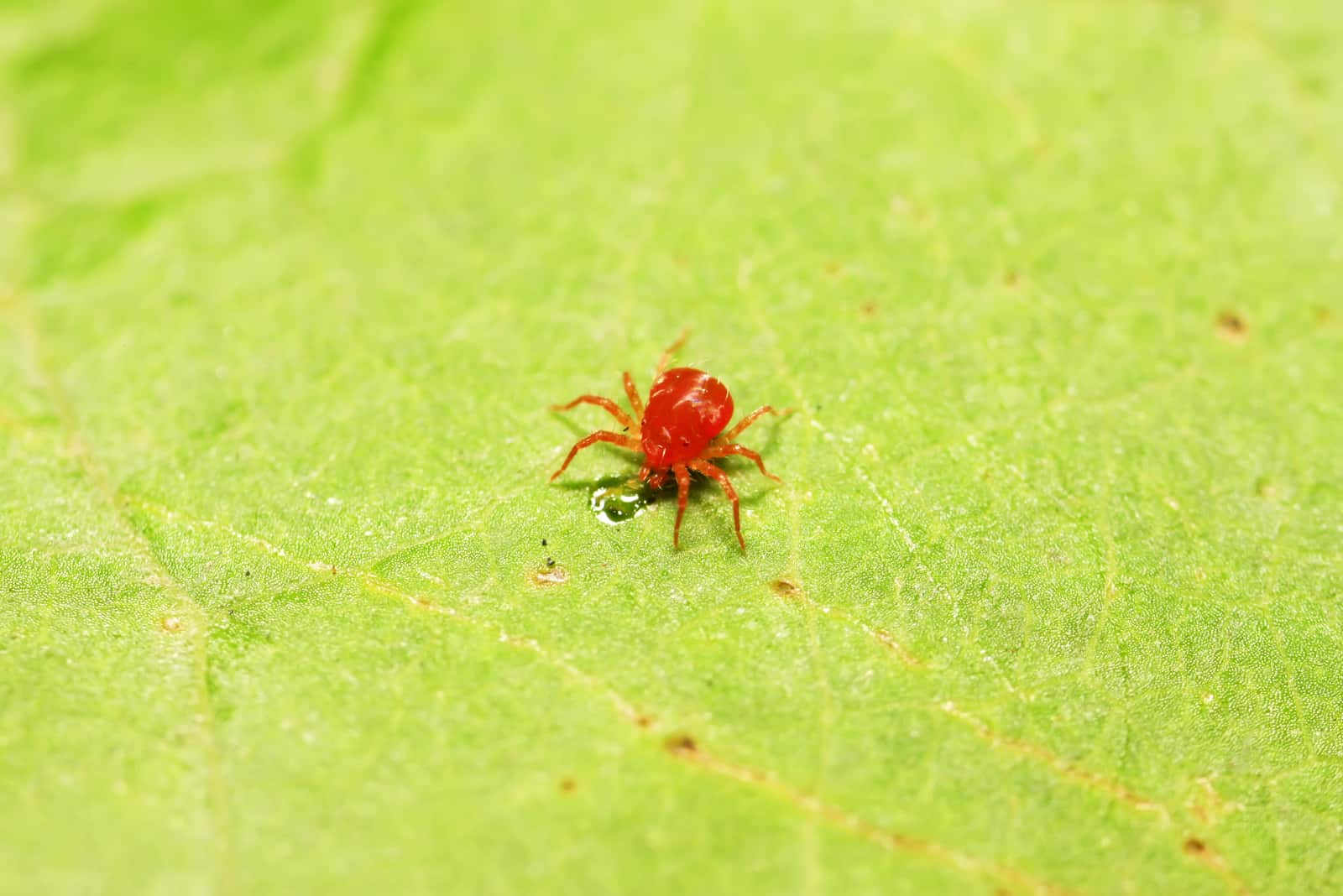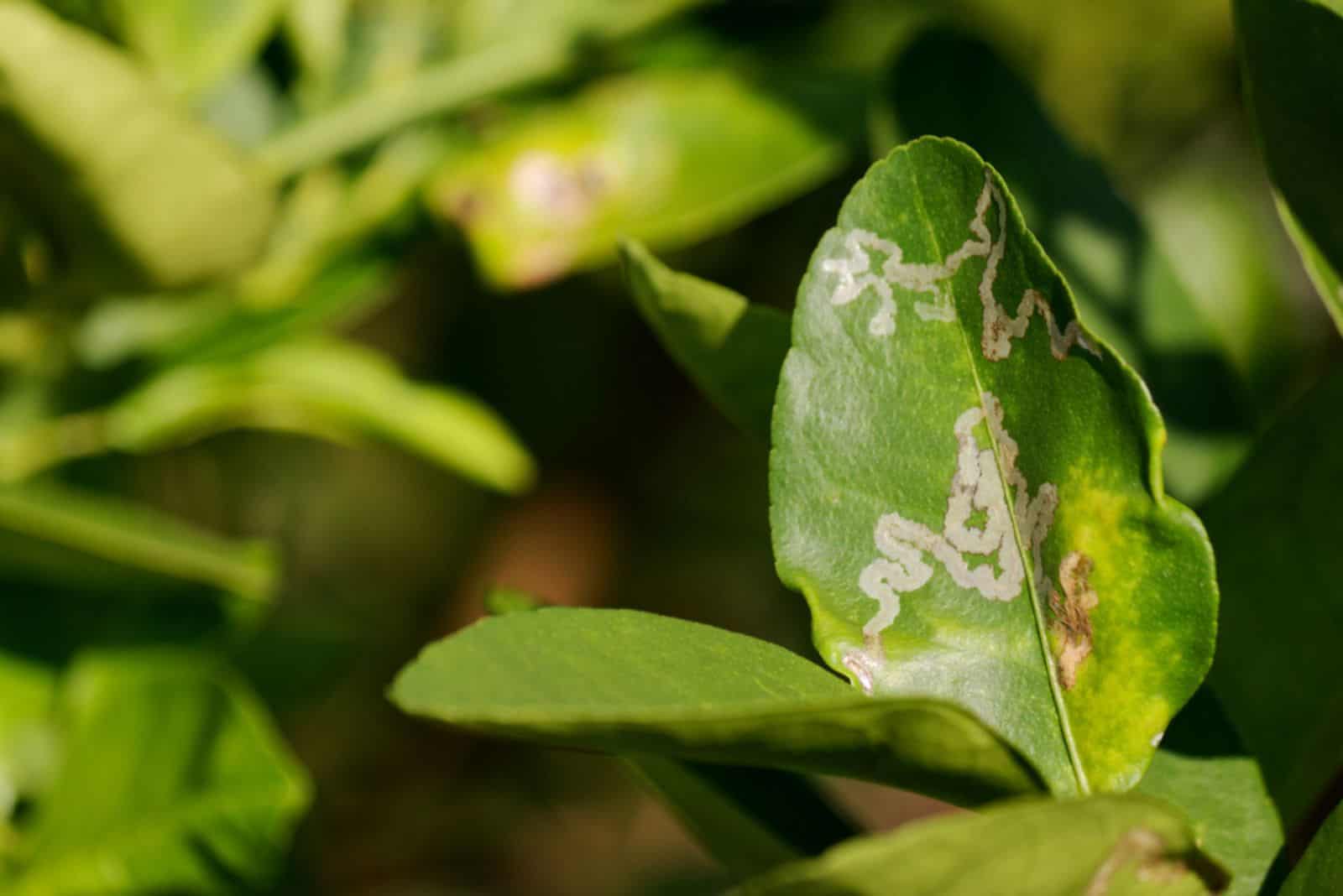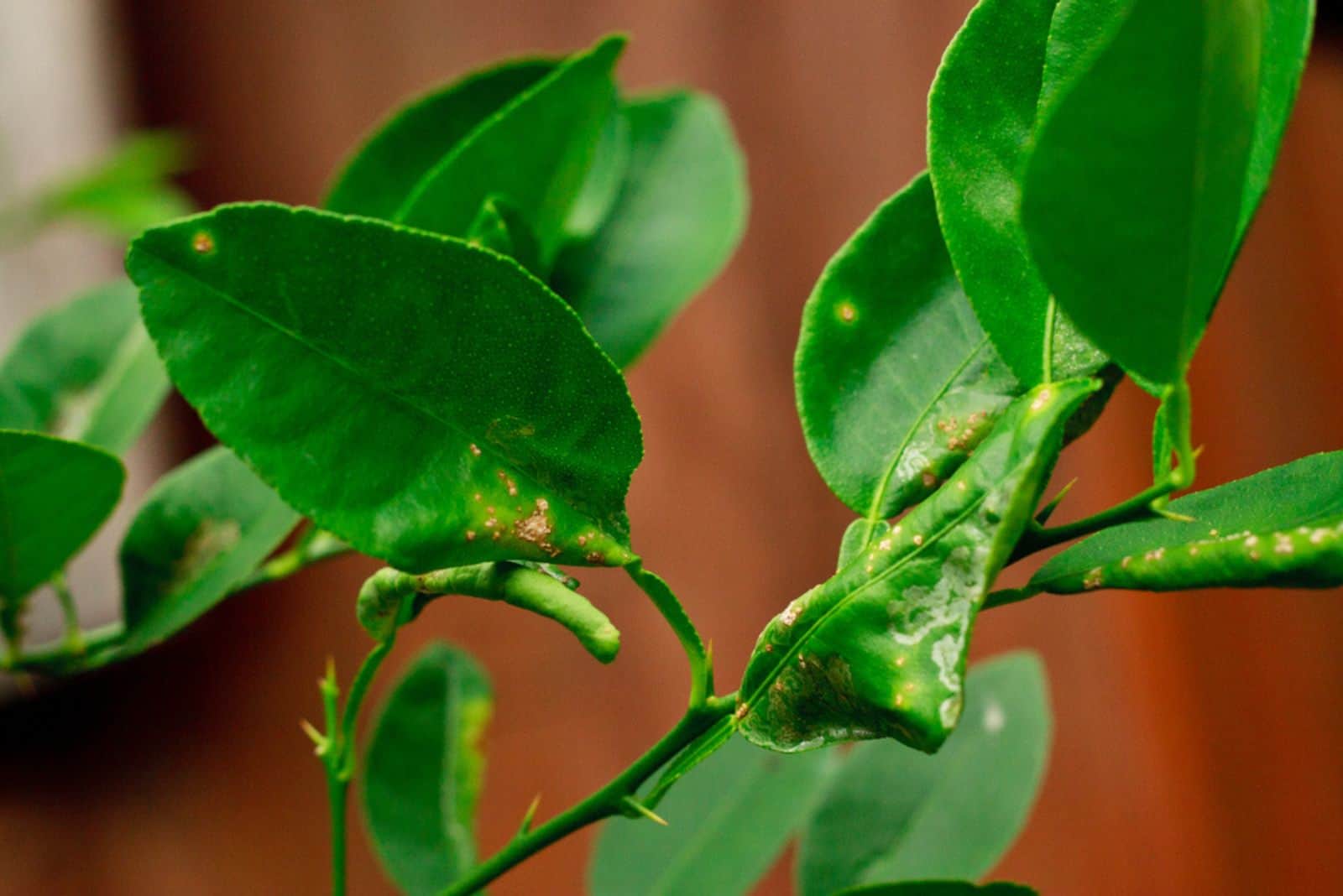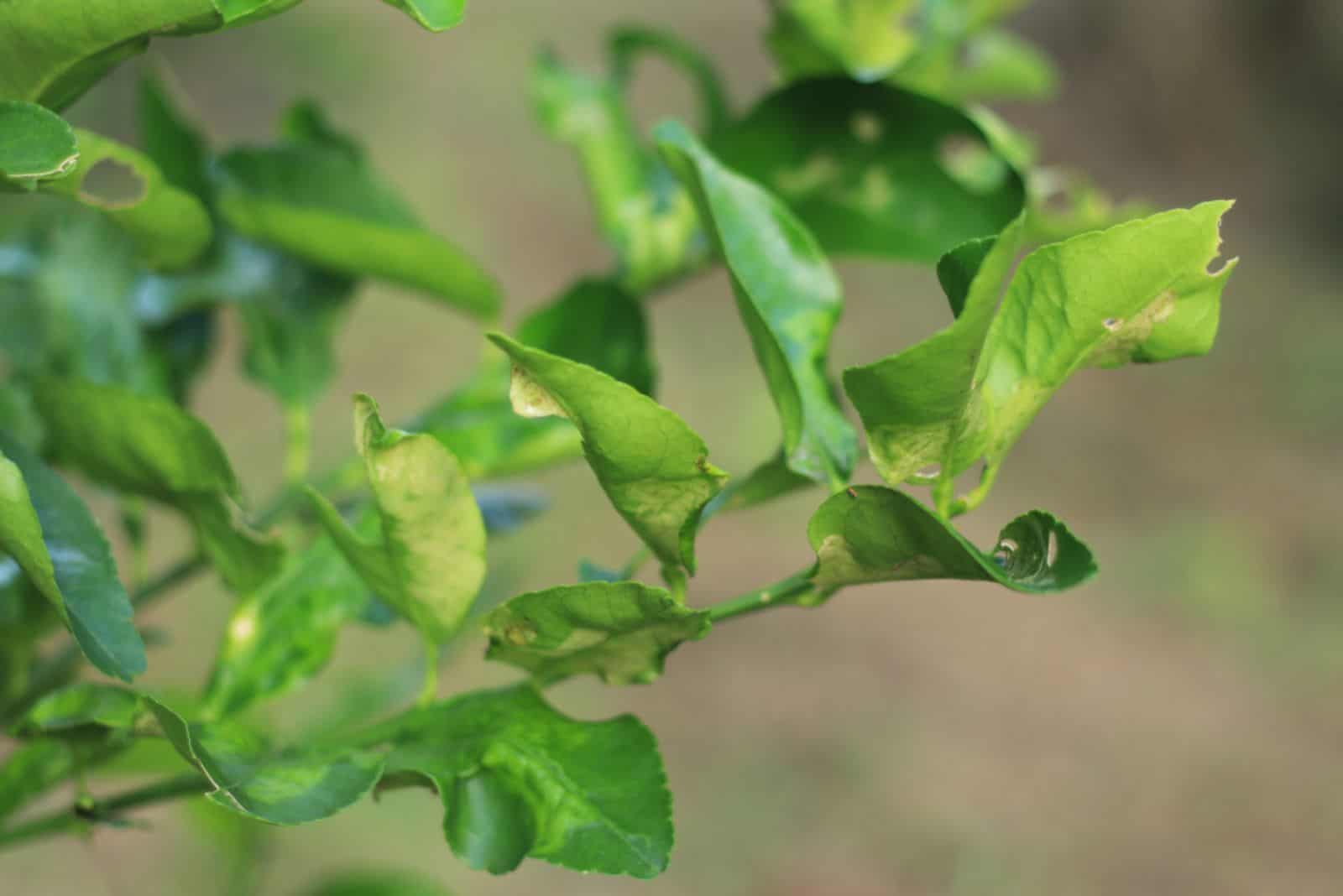Just as it seemed like your lemon tree was going to finally bear some lemons, you noticed your lemon tree leaves curling. What might be the cause?
Well, citrus trees are generally sensitive to low humidity, temperature, drought, and excess wind. These might be the reasons the citrus leaves started to curl up, in addition to pest infestations (which are the worst!).
If you are having similar issues, keep on reading to figure out what might be the culprit and how to fix your tree.
Lemon Tree Leaves Curling: Main Causes & How To Fix Them
Leaf deformations are the first indication that there is something wrong with your tree. If the plant care isn’t right, or if pests have attacked your tree, you will end up with citrus leaves curling.
Now, let’s look at the most common reasons for curling citrus leaves and also how to fix the issue.
1. Inadequate Watering
The first thing on our list is inadequate watering. This citrus plant requires a lot of moisture, especially when they are young and not yet established. However, it is important that you give them just enough water to avoid overwatering and underwatering.
In most cases, citrus leaf curl is due to drought stress.
You are either simply not watering your plant enough or the humidity is really low. For instance, if you are growing a Meyer lemon tree indoors, you should check the soil moisture regularly to see if they need more water. In addition to leaf curling, inadequate watering can also leave you with unripe green lemons.
On the contrary, if you give these tropical plants more than enough water, you might be overwatering them. In this case, the leaves will start turning yellow and droop. If you keep watering, you might end up with root rot, which is a fungus that can completely destroy your plant.
How To Fix Inadequate Watering
Nearly all citrus cultivars are small, thirsty plants that require regular, consistent irrigation. Make sure the soil drains effectively and water the tree well at least once a week; otherwise, the tree may receive too much water, which can cause root rot.
A lemon tree that has been deeply watered can go for a week without needing to be watered again, but if you are growing a plant inside, you should water it as soon as the soil is entirely dry.
Remember that the container must have drainage holes in the bottom to allow any extra water to leave the pot. You can also add mulch around the base of the tree to help retain soil moisture.
If your tree might be suffering from root rot, then transplanting it is the only option — you will have to trim off any dead or decaying roots and use fresh soil that is not contaminated.
2. Pest Infestation
Trust me, you are not the only fan of your sweet lemons! There are numerous tiny pests and insects that love stealing nutrients from your fruit tree. The most common insects include aphids, scales, spider mites, citrus leaf miners, and psyllids.
These critters will reside on the underside of the citrus tree leaf, sucking the delicious plant juices. Upon insect infestation, the leaves begin to curl and droop, but there can also be some discolorations.
All is not yet lost, however, and you can still save your lime tree!
How To Fix Pest Infestation
Insect pests can cause serious damage to plant health. This includes both indoor and outdoor plants. This is why I would suggest you regularly check the underside of the leaves to see if there are any pests colonies settled there.
If there are, then you should start with the organic option, which is applying neem oil. This works great as a pesticide and fungicide. However, you can also try insecticidal soaps, insecticides, or pesticides that are safe to use on citrus trees.
3. Nutrient Deficiency
Grapefruit, lemon, and orange trees are all heavy feeders. These citrus trees need a lot of nutrients to stay healthy and produce their delicious fruit. Lack of nutrients, especially potassium and magnesium, will cause their leaves to start curling, drooping, and turning yellow.
In case of a potassium deficiency, the leaves will curl at the tip. In case of a magnesium deficiency, the leaves will start curling outwards.
The most common cause is not fertilizing them enough, though you might have planted the trees too close to each other so they’re now competing for the nutrients they need.
How To Fix Nutrient Deficiency
Due to their intense feeding habits, lemons need fertilizers during the growing season, especially if you want them to produce fruit! They need nutrients, including copper, boron, phosphorus, nitrogen, manganese, and zinc.
During the growing season, I would advise using liquid fertilizer every other week and lemon fertilizer once every three months. This will provide enough nutrients and allow you to pluck lemons from your garden and produce homemade lemonade even faster!
Read also: What Is The Best Lemon Tree Fertilizer? How And When To Apply It
4. Wrong Temperatures
Lemons are sensitive to changes in temperature just about everywhere. Lemon trees grow best in temperatures between 77 and 88 degrees Fahrenheit; anything lower or higher will stunt their development.
However, a cold temperature (below 28 degrees Fahrenheit) for lemon trees is lethal – first the leaves would fall off, then the tree would be completely destroyed. They can endure a certain amount of cool weather, but they would go dormant if the temperature fell below 50 degrees.
Your tree would become too hot and the fruit would start to fall off at temperatures higher than 105 degrees Fahrenheit. The tree would quickly become dehydrated, which will result in the leaves curling.
How To Fix Temperature
The ideal climate for mature lemon trees is tropical or subtropical, with temperatures between 77 and 88 degrees Fahrenheit. A tree may go dormant and stop bearing fruit if temperatures are too high because it impedes photosynthesis.
Keep an eye out for temperature changes, especially when the plant is still growing, as you don’t want to wind up with a garden full of unripe lemons. If you are growing your lemon tree in a container, bring it indoors during the winter months if you are living in a region with a colder climate.
5. Citrus Tree Diseases
Similarly to pests, there are also a lot of fungi that can infest your precious lemon tree and cause fungal diseases that lead to leaves curling, yellowing, wilting, and dying.
Common citrus tree diseases include bacterial blast and botrytis.
Bacterial blast is elicited by a bacterium that enters the tree through wounds or feeding sites of insects. The leaves of the lemon tree will wilt, curl, and dry on the tree before they fall off.
Lemon trees are susceptible to the gray mold known as botrytis when the weather is humid. Lemon trees will lose their blossoms and fruit due to this fungus.
How To Fix Citrus Tree Diseases
Citrus blast can be avoided by growing citrus trees in wind-sheltered areas and promptly removing any dead or damaged branches.
Make sure your lemon tree has enough sunlight, sufficient air circulation, and isn’t overwatered to avoid botrytis. Immediately prune any afflicted branches and damaged leaves if you spot any botrytis symptoms.
If the tree gets infected, then you can treat it with fungicides. For instance, you can use either copper spray or neem oil because both are quite effective when treating fungal infections.
Read also: Copper Fungicide Vs Neem Oil: What’s The Better Option?
Frequently Asked Questions
1. How can you tell if a lemon tree is overwatered?
If you notice that the leaves are turning yellow and the soil is soggy and starts to smell, then you have probably been overwatering your lemon tree. You should immediately check the roots because of root rot, especially if you are growing your lemon tree in a container.
2. Why does a lemon tree have curling leaves?
A lemon tree can have curling leaves for several reasons. First of all, inadequate watering might be the culprit, especially if the tree has been exposed to drought stress. Extreme temperatures can easily affect these sensitive trees, causing their leaves to curl up and fall off.
However, the issue also might be pest infestations and citrus tree diseases. Additionally, you might not be giving your tree enough nutrients, which might lead up to unripe lemons and leaves curling.
To Sum Up
Lemon tree leaves curling is a common issue, especially if you are a beginner. Don’t worry, we have all been there!
All you have to do is find the reason the leaves are curling and try to fix that issue. We have covered pretty much all the issues that your lemon tree might have, so read carefully and see if there is anything that you are doing wrong.
You can fix this and be drinking fresh lemonade made out of your own lemons before you know it! 🙂
I hope this article was helpful.
Until next time!
Like this post? Share or pin it for later!








